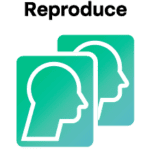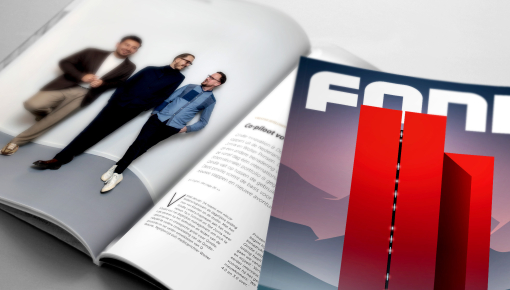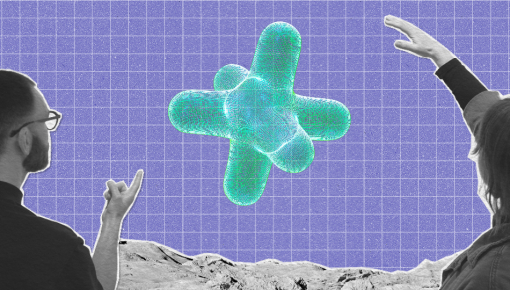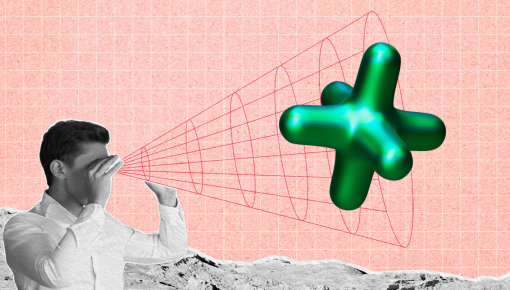How will data & AI change innovation and design? – Part IV
Data and AI will change the future of work, and innovation and design services are no exception. In this article series, I explore the opportunities for data and AI in the design process, beyond the automation of repetitive analytical tasks.
Six principles are foundational to Qindle’s data-driven design vision: Monitor, Automate, Customize, Synthesize, Reproduce and Create. The last two – Reproduce and Create – are the focus of this article.
Is AI capable of reproducing human creative output, or even creating it from scratch?
Principle 5 – Reproduce

Reproducing human creativity using technology is a polarizing topic, even though the practice is already well advanced. Five years ago, IBM’s Watson machine learning system was fed hundreds of images of artist Gaudi’s work. The machine was also given a mass of content based on possible influences of his work: Barcelona, its culture, biographies, historical articles and song lyrics. Watson then provided ‘inspiration’ to human artists who were charged with creating a sculpture in the style of Gaudi.
Around the same time, The Next Rembrandt Project was launched by ING and Microsoft, with J. Walter Thompson as creative partner. The entire Rembrandt collection was analysed pixel by pixel, using deep learning algorithms. To master Rembrandt’s unique style, a software system was developed that could understand Rembrandt based on his use of geometry, composition, and painting materials. A facial recognition algorithm identified and classified the most typical geometric patterns used by Rembrandt to paint human features. The learnings were used to create a brand new artwork.
This phenomenon has also entered the music world. 27 years after Kurt Cobain’s tragic death, the Over the Bridge organization has created a new Nirvana song as part of the project Lost Tapes of the 27 Club. Drowned in the Sun was created using Magenta, Google’s Machine Learning software for Music and Art. Magenta is an open-source Python library, powered by TensorFlow.
The song is recognizable as a Nirvana song but was heavily criticized by hardcore Nirvana fans for not capturing the ‘true’ Nirvana sound. Music-generating algorithms are not only creating new songs but also augmenting the work of songwriters and composers.
Given enough input — millions of conversations, newspaper headlines and speeches — AI can create themes for lyrics. AI-based tools can help musicians to understand what their audiences want and help pick future hits.
In a more commercial setting, AI was also used to produce 7 million unique versions of new Nutella packaging for the Nutella Unica project. Ogilvy & Mather Italy pulled off this seemingly impossible task using an algorithm that pulled patterns and colours from a database. The new graphic identity was splashed on Nutella jars across Italy.
These examples challenge the notion of what creativity really is. Does AI-generated creativity count as ‘new’ creation or only a reproduction? When is a creative outcome completely new – or does art always stand on the shoulders of its predecessors? AI principle number 6 – Create explores this further.
Principle 6 – Create
 Autonomous creation is the ultimate goal for artificial intelligence. AI has helped to write music, reproduce the styles of painters, writers, musicians and informed creative decisions in filmmaking.“Many examples of creativity involve learning and exploring in a hierarchical style. Neural and multilayer network systems can help us construct different frameworks to better understand those hierarchies, but there’s much more to learn and discover,” explains University of Sussex cognitive scientist Margaret Boden, who also serves as an advisor at Stephen Hawking’s Leverhulme Centre for the Future of Intelligence.
Autonomous creation is the ultimate goal for artificial intelligence. AI has helped to write music, reproduce the styles of painters, writers, musicians and informed creative decisions in filmmaking.“Many examples of creativity involve learning and exploring in a hierarchical style. Neural and multilayer network systems can help us construct different frameworks to better understand those hierarchies, but there’s much more to learn and discover,” explains University of Sussex cognitive scientist Margaret Boden, who also serves as an advisor at Stephen Hawking’s Leverhulme Centre for the Future of Intelligence.
But can AI be taught how to create without the guidance of datasets? And can we as humans create without input? Margaret Boden estimates that 95% of what professional artists and scientists do is exploratory and perhaps the other 5% is truly transformational creativity.
AI-enabled Chef Watson is an example of the 5%: it offers a glimpse of how artificial intelligence can become a sous-chef in the kitchen to help develop recipes and advise their human counterparts on food combinations to create completely unique flavours.
These technologies have already found their way to companies close to consumer markets. Chile-based company NotCo creates plant-based food and drinks with an AI-centric R&D approach, with an AI tool called Giuseppe. Giuseppe created their NotMilk product, containing no lactose, soy, gluten or genetically modified ingredients. Unlike other milk alternatives made from nuts and legumes, NotMilk replicates the taste and texture of cow’s milk, so you can cook, bake and froth it just as you would its non-vegan counterparts.
Closer to the design world, Autodesk’s Dreamcatcher project offers an exciting example of generative design tools. Dreamcatcher creates technical design solutions autonomously based on given goals and constraints, without the need for additional training data.
Soon, we will see more AI-assisted design in our environment. In his TED talk ‘The Incredible Inventions of Intuitive AI”, Maurice Conti explains how radical new designs for bridges, cars, drones and much more can be created with the help of AI. This includes constructions we, as designers and engineers, never could have imagined.
There’s no doubt that AI will play a central role in designing creative, but in the capacity of a creative partner: in close collaboration with human creatives, scientists, designers and engineers. In the end, AI will replace designers – not the designers of tomorrow, but those of today. Creatives of the future will adjust and evolve; it’s their role to set context, direction and boundaries. Together with AI, we will discover new limits to what we can achieve and contribute to the world.
Find also the introduction to this series, the first two principles: monitor and automate, and principles three and four: customize and synthesize.


